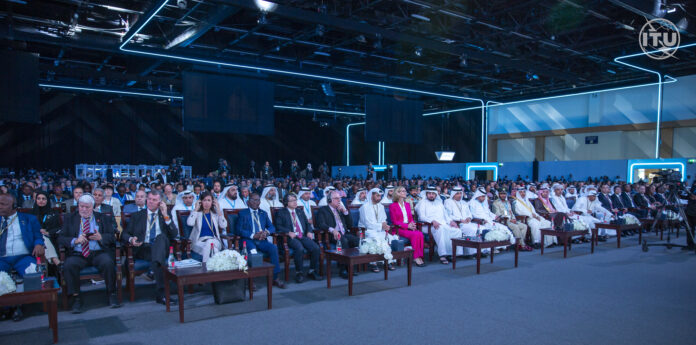GSMA hails “groundbreaking spectrum decisions” from WRC-23
The World Radiocommunications Conference of 2023 (WRC-23) has wrapped up its weekslong meeting in Dubai, emerging with a global consensus on harmonization of spectrum bands for mobile services as well as regulations for high-altitude platform stations and spectrum for evolving satellite operations.
John Giusti, chief regulatory officer at the GSMA, said that the event “has provided a clear roadmap for mobile services to continue to evolve and expand for the benefit of billions across the globe.”
Among the decisions to emerge from WRC-23 were official harmonization of existing bands for 5G in the midband, specifically the 3.3-3.4 GHz and 3.6-3.8 GHz bands, which the U.S. State Department said creates “500 megahertz of contiguous mobile broadband spectrum across the entire region while providing the necessary interference protection to our federal agencies who also use some of this spectrum.”
The 2 and 2.6 GHz bands emerged as spectrum for support of high-altitude platform stations as IMT base stations (HIBS), and regulations were established for operations of such equipment. “This technology offers a new platform to provide mobile broadband with minimal infrastructure using the same frequencies and devices as IMT mobile networks. HIBS can contribute to bridging the digital divide in remote and rural areas and maintain connectivity during disasters,” according to a WRC statement.
Wi-Fi advocates were cheering the WRC decisions related to the use of the upper 6 GHz band. “While deciding to identify the upper 6 GHz spectrum for International Mobile Telecommunications (IMT) in Europe, Africa and a few other countries, the conference adopted an international treaty provision to explicitly recognize that this spectrum is used by wireless access systems such as Wi-Fi,” Wi-Fi Alliance pointed out. “Importantly, the WRC-23 rejected proposals to expand the upper 6 GHz IMT identification to several other countries or to consider such IMT identifications at the next WRC in 2027.”
The GSMA, meanwhile, noted that “countries representing more than 60% of the world’s population [asking] to be included in the identification of this band for licensed mobile at WRC-23,” and it declared that “6 GHz spectrum is now the harmonised home for the expansion of mobile capacity for 5G-Advanced and beyond.”
“The WRC was not just weeks of work in Dubai, but also years of preparation by the FCC, experts across the government, and our telecommunications industry,” said Federal Communications Commission Chairwoman Jessica Rosenworcel, who attended WRC. “The delegation’s accomplishments will promote innovation in unlicensed spectrum including Wi-Fi, support 5G connectivity, pave the way for 6G, and bolster U.S. leadership in the growing space economy. We now look forward to getting to work on preparations for WRC-27.”
CTIA President and CEO Meredith Attwell Baker said that CTIA applauded the decision to harmonize new spectrum bands for 5G and beyond, “particularly the critical lower 3 GHz band and the 7/8 GHz bands.”
She continued: “It is essential that the United States takes this opportunity now to align our domestic policies with other countries around the world and establish a pipeline of mid-band spectrum for licensed commercial use so that we can unlock economies of scale, fuel new sources of growth and innovation, and strengthen our influence and future leadership in the global wireless ecosystem. The world is moving ahead, and the United States must keep pace.”
Meanwhile, the EMEA region saw more low-band spectrum defined for mobile use, specifically at 470-694 MHz, to provide a coverage layer with greater reach and penetration.
“WRC-23 puts the world on a solid path towards a more connected, sustainable, equitable and inclusive digital future for all,” said Doreen Bogdan-Martin, ITU Secretary-General. “Key regulatory achievements on spectrum for space, science and terrestrial radio services build on the momentum of ITU’s ongoing work to achieve universal connectivity and sustainable digital transformation.”
As a result of discussions at WRC-23, the International Telecommunications Union also has a number of study items planned, which include possible new allocations for direct connectivity between space base stations and mobile user equipment, and potential new allocations or regulations on future development of low-data-rate, non-geostationary mobile-satellite systems, also referred to as small satellites.

